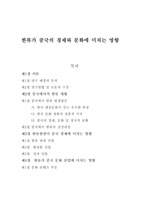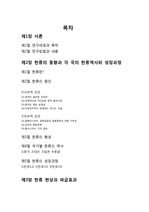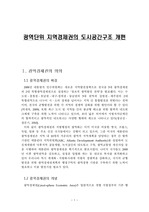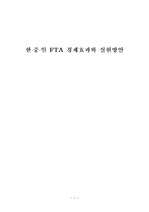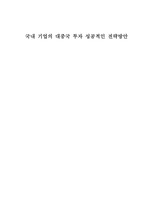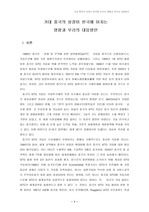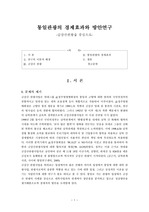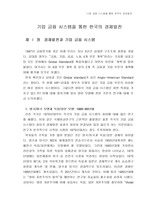

-
서지정보
· 발행기관 : 한국중세사학회
· 수록지 정보 : 한국중세사연구 / 42호 / 9 ~ 46페이지
· 저자명 : 안병우
초록
The Goryeo Kingdom is well known for its openness. The openness has mainly been focused on its foreign, or external interchanges, however, its internal openness is important as well. Being the basis for diversity and reform, openness, especially of its external outcomes sometimes works as a driving force for internal reform. However, symmetry is not always working between internal and external characteristics of openness.
Goryeo openness varies in periods. In the first half of the kingdom, it benefitted itself through positive exchanges with many countries in China, and eventually was able to carry out the internal reforms. The introduction of the Civil Service Exam makes a representative case. The literary men with Confucian background recruited through the exam system have become the backbones of the civil functionaries dominant bureaucracy. In the mid period, though the internal openness was reduced as the results of the ideological confrontation between the noble family groups and the rising powers, the interchanges with the Song Dynasty was nonetheless active. In the military rule period, the war against the Mongol forced the kingdom to reduced the range of the external openness, however, it witnessed an unprecedented phenomenon that a slave very close to a military ruler assumed public office. The period of the Mongol intervention saw the unrivaled enlargement of external openness. Internally the period saw the advance of a new ruling class with a low status background. Neo-Confucianism, made its way to Korea in the period was at odds with Buddhism which had enjoyed the status of the state religion and the dominant ideology also. As the result of the founding of the Joseon Dynasty for which the Neo-Confucian scholar officials had a great role, the diversity of religion and thought was extremely reduced.
Openness plays an important role in East Asia these days. Korea, China, and Japan all claim to advocate openness. Especially, ever since the proclamation of the reform and openness in the late 1970s, China has enjoyed a rapid development, joining the second place in GDP ranking, in which Korea occupies the 13th place. Korea, having a strong economic ties with China and Japan, has a high degree of openness to the extent that more than half of its GDP comes from export. However, in the indexes of democracy, press freedom, transparency, and the public information rate which are critical in evaluating the degree of openness of a country, the three countries show a big differences. Particularly China reveals a great asymmetry between the internal reform and the external economic opening. The index of press freedom in Korea and Japan has been deteriorated. The road for a mature open society should be based on a more internal openness.영어초록
The Goryeo Kingdom is well known for its openness. The openness has mainly been focused on its foreign, or external interchanges, however, its internal openness is important as well. Being the basis for diversity and reform, openness, especially of its external outcomes sometimes works as a driving force for internal reform. However, symmetry is not always working between internal and external characteristics of openness.
Goryeo openness varies in periods. In the first half of the kingdom, it benefitted itself through positive exchanges with many countries in China, and eventually was able to carry out the internal reforms. The introduction of the Civil Service Exam makes a representative case. The literary men with Confucian background recruited through the exam system have become the backbones of the civil functionaries dominant bureaucracy. In the mid period, though the internal openness was reduced as the results of the ideological confrontation between the noble family groups and the rising powers, the interchanges with the Song Dynasty was nonetheless active. In the military rule period, the war against the Mongol forced the kingdom to reduced the range of the external openness, however, it witnessed an unprecedented phenomenon that a slave very close to a military ruler assumed public office. The period of the Mongol intervention saw the unrivaled enlargement of external openness. Internally the period saw the advance of a new ruling class with a low status background. Neo-Confucianism, made its way to Korea in the period was at odds with Buddhism which had enjoyed the status of the state religion and the dominant ideology also. As the result of the founding of the Joseon Dynasty for which the Neo-Confucian scholar officials had a great role, the diversity of religion and thought was extremely reduced.
Openness plays an important role in East Asia these days. Korea, China, and Japan all claim to advocate openness. Especially, ever since the proclamation of the reform and openness in the late 1970s, China has enjoyed a rapid development, joining the second place in GDP ranking, in which Korea occupies the 13th place. Korea, having a strong economic ties with China and Japan, has a high degree of openness to the extent that more than half of its GDP comes from export. However, in the indexes of democracy, press freedom, transparency, and the public information rate which are critical in evaluating the degree of openness of a country, the three countries show a big differences. Particularly China reveals a great asymmetry between the internal reform and the external economic opening. The index of press freedom in Korea and Japan has been deteriorated. The road for a mature open society should be based on a more internal openness.참고자료
· 없음태그
- # 개방성
- # 개방사회
- # 고려
- # 동아시아
- # 개혁/개방
- # 과거제도
- # 관료제
- # 문벌
- # 민주주의지수
- # 언론자유지수
- # 정보공개율
- # 투명성지수
- # Openness
- # open society
- # Goryeo
- # east asia
- # Reform and Openness
- # system of Civil Service Exam
- # literary functionaries dominant bureaucracy
- # noble family
- # index of democracy
- # index of press freedom
- # public information rate
- # index of transparency
-
자료후기
-
자주묻는질문의 답변을 확인해 주세요

꼭 알아주세요
-
자료의 정보 및 내용의 진실성에 대하여 해피캠퍼스는 보증하지 않으며, 해당 정보 및 게시물 저작권과 기타 법적 책임은 자료 등록자에게 있습니다.
자료 및 게시물 내용의 불법적 이용, 무단 전재∙배포는 금지되어 있습니다.
저작권침해, 명예훼손 등 분쟁 요소 발견 시 고객센터의 저작권침해 신고센터를 이용해 주시기 바랍니다. -
해피캠퍼스는 구매자와 판매자 모두가 만족하는 서비스가 되도록 노력하고 있으며, 아래의 4가지 자료환불 조건을 꼭 확인해주시기 바랍니다.
파일오류 중복자료 저작권 없음 설명과 실제 내용 불일치 파일의 다운로드가 제대로 되지 않거나 파일형식에 맞는 프로그램으로 정상 작동하지 않는 경우 다른 자료와 70% 이상 내용이 일치하는 경우 (중복임을 확인할 수 있는 근거 필요함) 인터넷의 다른 사이트, 연구기관, 학교, 서적 등의 자료를 도용한 경우 자료의 설명과 실제 자료의 내용이 일치하지 않는 경우
찾으시던 자료가 아닌가요?
지금 보는 자료와 연관되어 있어요!
문서 초안을 생성해주는 EasyAI





